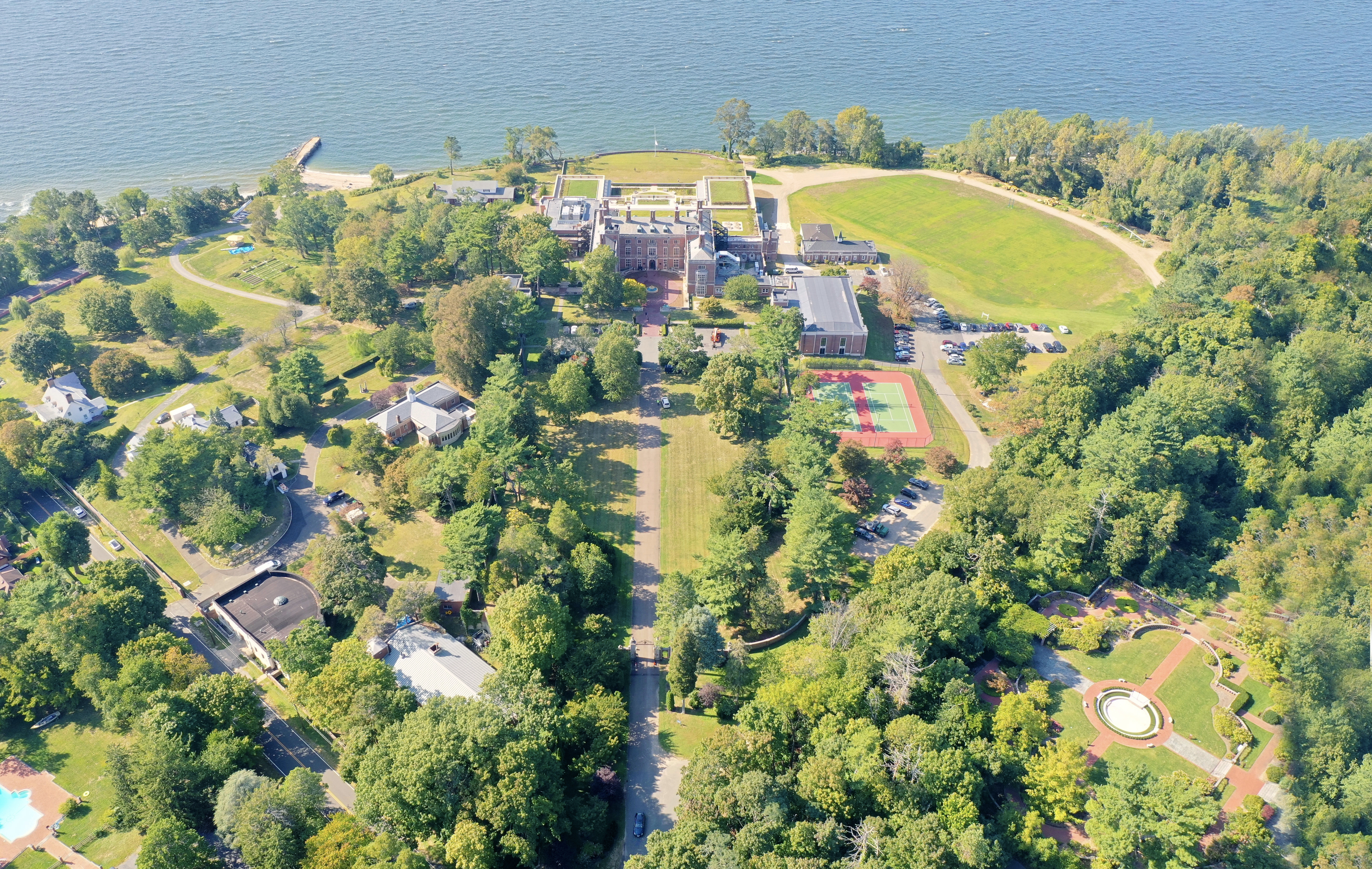
Call To Actions

Webb Institute

The Couch Academic Center, completed in 2020, is a state-of-the-art facility designed around teaching, learning, and collaboration. Overlooking Long Island Sound, this building features collaborative student project and innovation spaces, student work studios and lecture halls, computer and makers labs, faculty offices, and a student lounge.
Stevenson Taylor Hall, built in 1912, is the central building on Webb’s campus. The building, which was originally part of the historic Pratt Estate, was named after marine engineer, Stevenson Taylor, who served Webb Institute in various roles for 37 years. Stevenson Taylor Hall houses the Visconti Reception Room, Livingston Library, Henry Auditorium, Rosenblatt Gallery, Keeler Reading Room, dining halls, administration offices, kitchens, and dormitories.

Through a generous donation by the late John A. Livingston and his wife, the Livingston Library, located in Stevenson Taylor Hall, was built in 1973. The Livingston Library’s expansive collection of approximately 50,000 titles and 300 periodicals is designed to support Webb’s curriculum, housing standard works on engineering, marine engineering, naval architecture, professional periodicals, and proceedings of conferences and engineering societies. Additionally, the library subscribes to various research databases and has an expansive collection of electronic titles as well. The Livingston Library is available to all students and faculty members on a 24-hour basis. Members of the general public may have access to the Livingston Library during regular business hours, by appointment only.

The Goldbach Boathouse, located near Webb’s private beach and pier, houses supplies for the fleet of 420s, Boston Whalers, wind-surfers, and kayaks. Students often use the boathouse to store sailing equipment and to unwind with an outdoor BBQ. The boathouse was named for Richard and Janet Goldbach in recognition of their generous support to Webb by Richard A. Goldbach ‘58.

The Robinson Model Basin, built in 1947, houses a ship model towing tank and an instrumentation room. The 93-foot-long tank model tank is used for student course work, academic instruction, consulting work, and research for the U.S. Navy. The tank features a full-height viewing window which allows for observations to be made above and below the water line.

Provided by donations to Webb’s Alumni Association, the Alumni Gymnasium was built in 1947. The gymnasium has a standard basketball court, and is also used as a volleyball court, houses weight machines, lockers, office space, and spare guest rooms. Behind the gymnasium are two hard surface tennis courts which are available to all students.

Built in 1947, Motley Hall serves as a co-ed residence to Webb’s students. In addition to dorm rooms, Motley Hall also includes a common room where students can gather. Motley Hall is just a short distance from Stevenson Taylor Hall where most classes are held.
The Thorpe Athletic Field was created in 1983 in memory of Richard W. Thorpe, as a result of a generous gift from his son, Richard W. Thorpe, Jr. '55.

Built in 1950, the Luckenbach Building was named in honor of J. Lewis Luckenbach and his wife Kate I. Luckenbach, who were staunch supporters of Webb. The building houses faculty and development offices, as well as the Advanced Learning Center (ALC). The ALC was designed to support new learning technologies together with distance learning capabilities. The classroom is outfitted with a video conferencing system, cameras, speakers, and microphones that support the receipt and delivery of lectures from remote and local participants.

Available for student use, Webb’s Carpenter Shop houses various power tools: including a table saw, compound mitre saw, jointer, bandsaw, drill press, and a suite of hand power tools. The shop also houses the Webb model cutter, a ShopBot three-axis CNC router. Students often use the shop for various projects.

Available to students for instructional use and project work, Webb’s machine shop, houses a set of MIG, TIG and arc-welding stations, lathes and milling machines (including a CNC mill), as well as saws, grinders, drill presses, and many smaller items typically found in a shop. It also contains an aluminum shop for cold forming aluminum sheets.

Named after Rear Admiral R. E. Haeberle, USN Ret., Webb Institute former President, Haeberle Lab houses several state-of-the-art laboratories that are designed to help students explore and master naval architecture and marine engineering.The laboratories are: marine engineering, mechanical engineering, materials testing, structural, electrical engineering, and fluids.